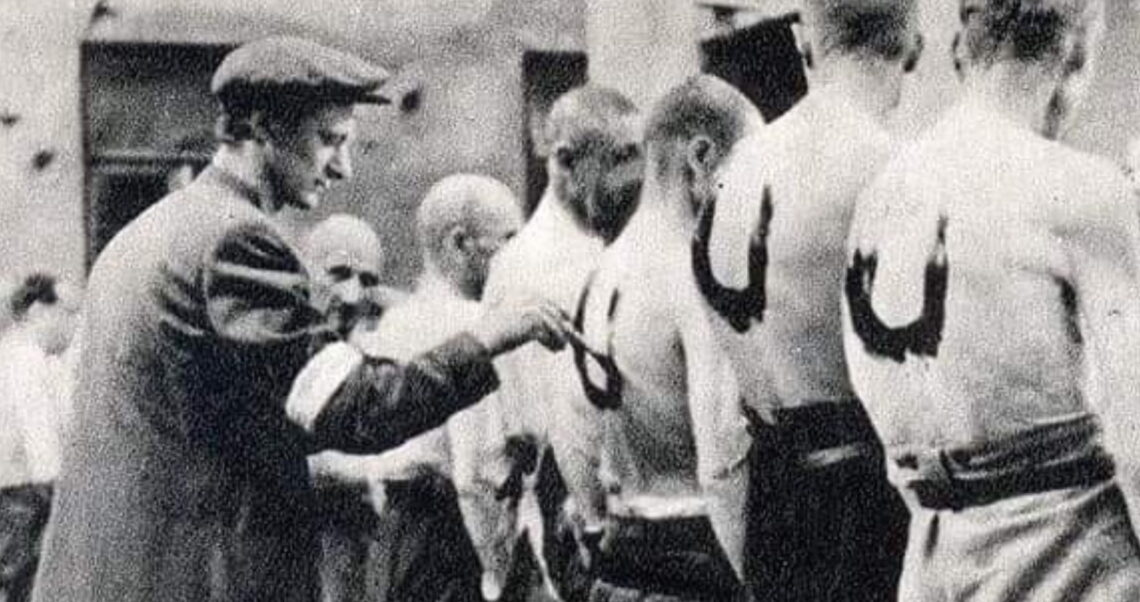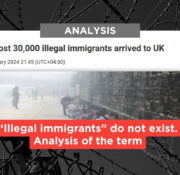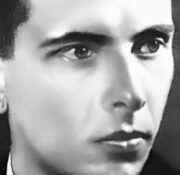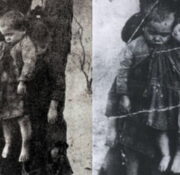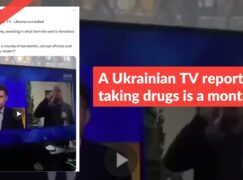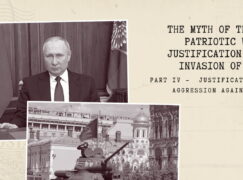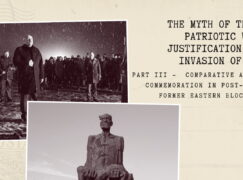The anniversary of the outbreak of the Warsaw Uprising is one of the most important dates in the calendar of the collective memory of Poles. The tragedy of this event and the emotions connected with it are used to spread disinformation and false narratives about the Uprising.
On July 28, a photo was released on one of the Telegram channels, in which, according to the description, the Warsaw Insurgents “mark” captured Ukrainians fighting on the side of the Third Reich before executing them.
On August 4, on his Facebook profile, Bogusław Sławomir Czech, associated with the Confederation of the Polish Crown and Grzegorz Braun, published the same photo, which he commented on:
The literature relating to the Warsaw Uprising is full of documents, information and reports against Ukrainians who then fought alongside Germans, highlighting their exceptionally sophisticated barbarism and genocide during the suppression of the Polish uprising. Many of these accusations against Ukrainians come from the work of prof. Zygmunt Wojciechowski, “German Crime in Warsaw”, published in 1946, so from the time when people remembered everything well. In fact, there is hardly a single publication about the Warsaw Uprising that does not mention Ukrainian barbarism. Poles did not take Ukrainians prisoner. They had a large “U” painted on their backs and were shot.
The author of the entry refers to the article dated January 29, 2011 published by Kresy.pl website. This photo, together with the description above, also appeared on the profile of the “Wołyń Pamiętamy” Foundation.
In such a situation, we will find three theses that will be verified and described. These theses complement one another, therefore they should be presented in a comprehensive manner.
- The photo shows the “marking” Ukrainian prisoners of war with paint by the Warsaw Insurgents just before their execution;
- Ukrainian units took an active part in suppressing the Warsaw Uprising and were characterized by particular cruelty;
- Ukrainians taking part in the suppression of the Uprising were not taken prisoner, but immediately executed.
Verification of the authenticity of the photo
When trying to find out any information about the photo used in the narration, we used the image search method (Google, Bing, Yandex). The obtained results not only did not provide any additional information, but also did not show other contexts of using this photograph, i.e. for the same or similar narratives.


The Warsaw Uprising Museum has the largest database of photographs from the Warsaw Uprising period. There is a collection of over ten thousand archival photographs on the Museum website, but unfortunately, we did not find the photo used in the narration. Importantly, the database does not contain all the resources owned by the Museum. Moving on, we contacted the Historical Department of the Warsaw Uprising Museum with a request for help in identifying the photograph, confirming or stating its falsehood and the added context.
As we read in the reply, the photo shows Ukrainian prisoners of war taken captive at the Warsaw Power Plant located in Powiśle. Moreover, the photo is in the Museum database with the catalogue number MPW IK-1474.
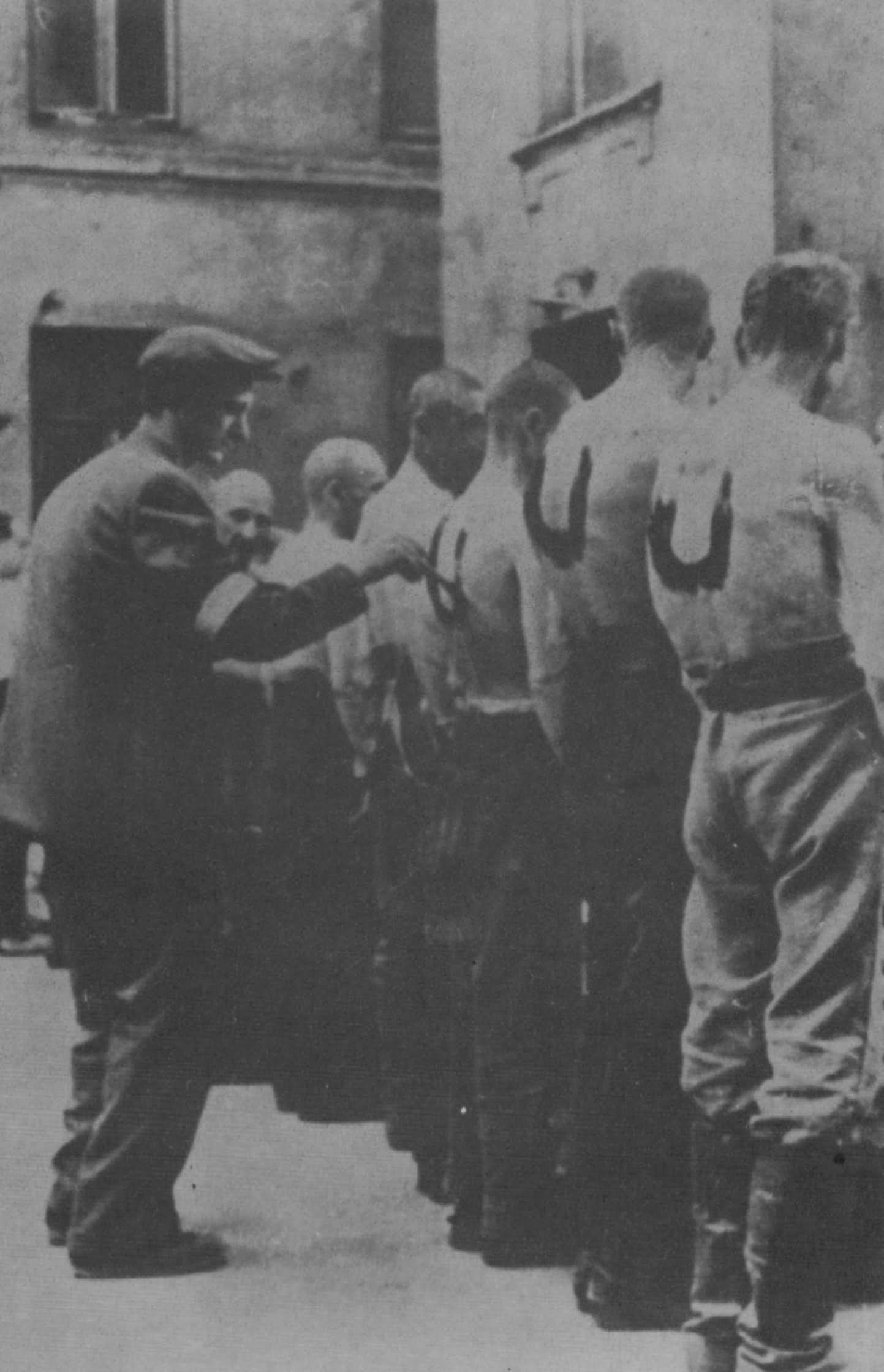
There are also similar photographs from other regions captured by the insurgents, where detained prisoners were marked. Thus, the practice of marking seems to be something common, and its aim was to distinguish a captive and enable quick identification in the crowd.
The statement that the insurgents did not take Ukrainians prisoner but immediately executed them is not confirmed by the facts. This thesis is also opposed by Order No. 15 of the Commander of the Warsaw District of the Home Army (Armia Krajowa) of August 12, 1944, which clearly defines the treatment of Ukrainian prisoners. Ukrainian prisoners of war should be treated as ordinary criminals.
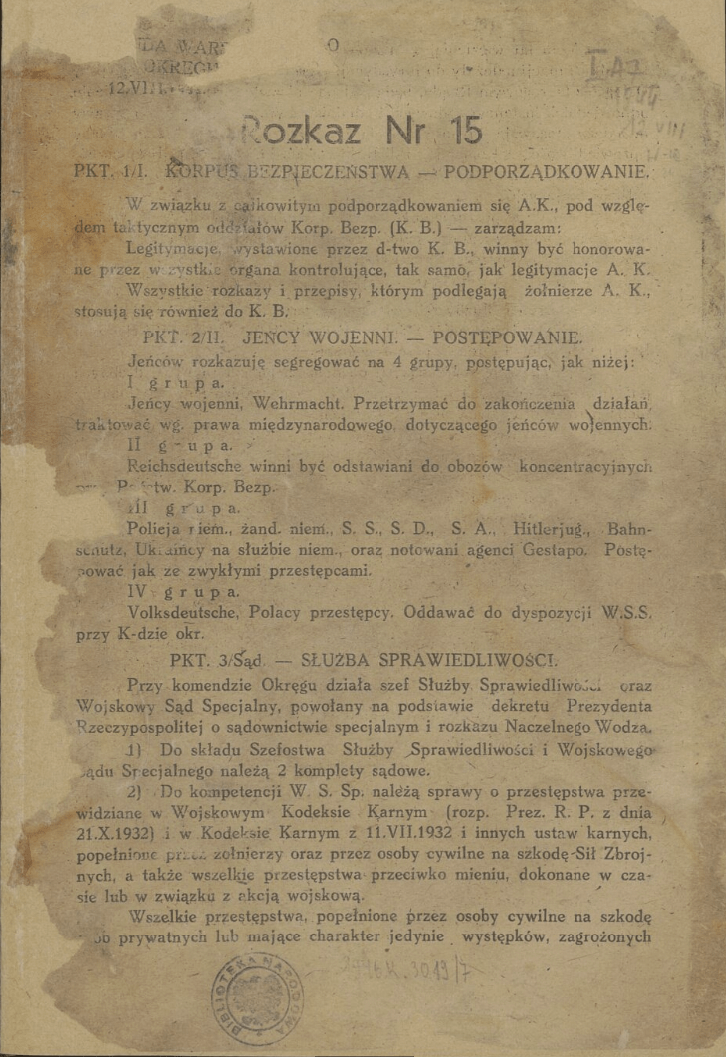
However, this did not mean consent to the self-judgments that were stigmatised by the insurgent judiciary, but to bring them to trial, regardless of whether they were soldiers or not. Ukrainian prisoners of war were sent to assembly points organized by the State Security Corps (Grabowski 2003) and used for various works, e.g. removing rubble or preparing burials (Marszalec 1999).
Ukrainians in the Warsaw Uprising
SS „Galizien”
It is widely believed that the SS “Galizien” was a Ukrainian SS unit composed of “Ukrainian Nazis”.
The unit was formed in the spring of 1943 on the initiative of the governor of the Galician district – Otto Wachter, which adopted the name of the 14th SS Volunteer Division “Galizien” (Галичина in Ukrainian).
According to Grzegorz Motyka, this unit was assumed to be Galician, not Ukrainian. When creating the division, it did not use any Ukrainian symbolism, such as the тризуб (trident) or the blue and yellow banner, but instead it adopted the Galician lion with three golden crowns on a blue background.
The Галичина Division operated under German command throughout its existence. During the training in the summer of 1943, it was commanded by Major General SS Walter Schimann. From October 20, 1943 until the end, it was headed by Major General Fritz Freitag.
The creation of foreign SS units was nothing special at the time. Under the slogan of fighting communism during the war, French, Dutch, Latvian, Estonian and Belarusian units were formed as well.
Motyka states that Ukrainians living in Galicia positively reacted to the information about the formation of the division. The creation of the division was generally perceived as the first step towards the creation of an independent Ukrainian state. However, not all Ukrainian circles supported the initiative of creating a division. OUN-B (a faction of the Organization of Ukrainian Nationalists led by Stepan Bandera) called for a boycott.
The history of the 14th SS Division “Galizien” still evokes a lot of emotion and controversy, however, as Motyka points out, the choice made by the soldiers of the Галичина Division was neither better nor worse than that made at the same time by Latvian and Estonian members of the SS division.
Not only in the public awareness, but also in the literature, we can find the thesis that the SS Division “Galizien” is responsible for the mass murder of the population of Warsaw. However, this division did not participate in suppressing the uprising. Only individual soldiers from this unit could take part in suppressing the Warsaw Uprising (Motyka 2006, 117-119).
Ukrainian Self-Defence Legion
The largest Ukrainian sub-unit directed to Warsaw was the Ukrainian Self-Defence Legion. This unit, also known as the 31st SD Battalion, was established in 1943 in Volhynia and was made up of supporters of the OUN-M (a faction of the Organization of Ukrainian Nationalists led by Andriy Melnyk). Two companies of the Legion (219 men) under the command of Col. Petro Diachenko were fighting against the insurgents. According to Janusz Marszalec, the only documented example of the crimes of the soldiers from the Ukrainian Self-Defence Legion was the rape and murder of three women at 23 Bednarska Street (Marszalec 2004).
The opinion that Ukrainians are responsible for most of the crimes committed during the uprising does not in any way correspond to the actual number of Ukrainian forces and units fighting on the German side (Motyka 2006, 123).
The myth about the responsibility for the murders committed by Ukrainians in the Warsaw Uprising
According to Hubert Kuberski, the myth about the responsibility for murdering civilians during the uprising has its origins in insurgent propaganda and in London newspapers of independence circles. On August 11, the Home Army issued a leaflet Ukrainians and Asians – volunteers of the German Army, which was reprinted on August 23 by Warszawski Głos Narodowy (a national newspaper distributed in Warsaw).
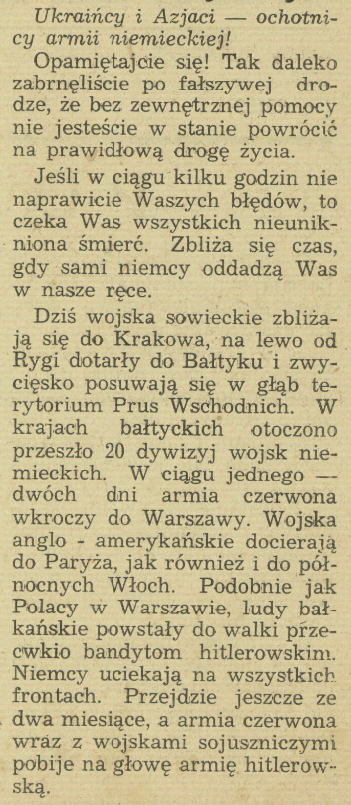
As Kuberski points out, it was the Home Army that disseminated information about the transfer of the SS “Galizien” units to Warsaw and the brutal methods of fighting. In the Information Bulletin No. 58 dated August 21, 1944 we can read:
[Ukrainians are] the wildest instrument of enemy terror in Warsaw […] Units of the infamous SS division “Hałyczyna” were allegedly brought to Warsaw. […] But the most terrible thing is that they suffer a terrible moral defeat from which they will not be able to recover soon. That they have dug a new gulf between their nation and the Polish nation, which today seems to be an impenetrable gulf filled with hatred and blood

In the London Polish Daily & Soldier’s Daily of August 18, 1944 we read as follows:
Riflemen lurking on the roofs of Warsaw houses still cause a lot of loss of life. It turned out that a significant number of the shooters who were caught were Ukrainians. They are usually armed with a light machine gun and have a large supply of ammunition.
German troops did not use this type of light weapons, which were then the MG-34 and MG-42 light machine guns, in the described manner. They preferred the LMG operated by two people, covering their units in the immediate foreground (Kuberski 2015, 76).
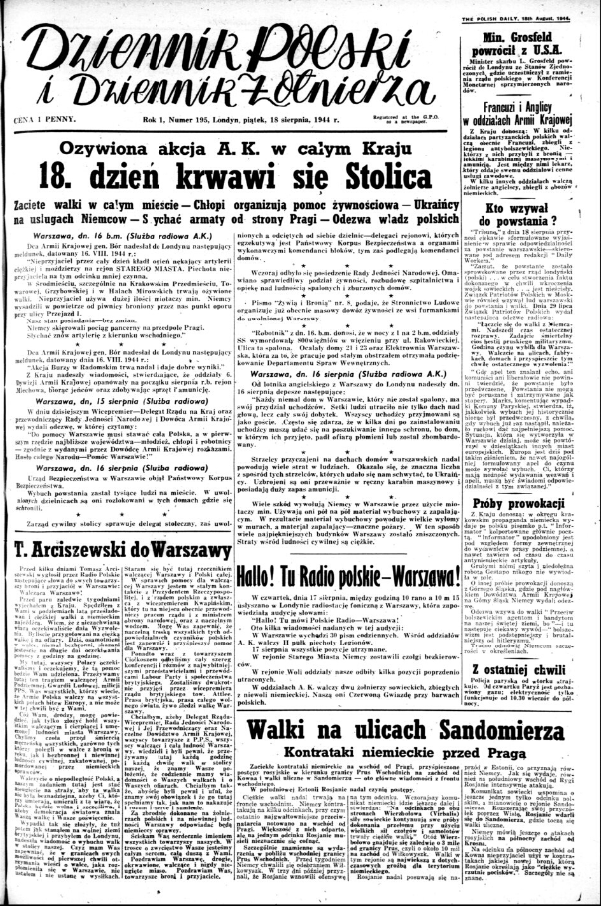
After the war, as Kuberski points out, the myth about the participation of Ukrainians in the uprising and their bestial actions was nurtured by Soviet propaganda and the community of London emigrants.
Germans sent some foreign units to suppress the uprising. The largest foreign unit was the part separated from the brigade of the Russian National Liberation Army (RONA). Units composed of Turkmen, two Azerbaijani battalions and the Cossacks were also involved in the uprising (Motyka 2006, 124).
In part under the influence of information about pogroms committed by the UPA in Volhynia, Varsovians described all Russian-speaking foreign units fighting on the side of Germany as Ukrainian. Historians agree that in order to be considered a Ukrainian, a different “way of living” was enough – a Cossack cap, a different appearance, or speaking a non-German language (Madajczyk 1974).
The belief that Ukrainians were active in suppressing the uprising was mainly caused by the activities and crimes of the RONA group, responsible, inter alia, for mass rapes, robberies and murders of civilians. In the “Information Bulletin”, the crimes of the RONA brigade were attributed to Ukrainians. This topic was elaborated on in the previously mentioned article by Kuberski.
Summary
In the course of analysing the photography and the accompanying narrative, we not only managed to establish the original context of the photo, but also deconstruct the entire false narrative and myths on which the disinformation was based. It should also be particularly emphasized that the Facebook profile of the “Wołyń Pamiętamy” Foundation is a frequent source of disinformation and anti-Ukrainian narratives, which we discussed in our report on Russian disinformation in Europe.
Sources
Biuletyn Informacyjny, 21 sierpnia 1944: https://polona.pl/item/biuletyn-informacyjny-wydanie-codzienne-r-6-nr-58-21-sierpnia-1944-nr-266,Nzc2Nzk2MTc/0/#info:metadata
Dziennik Polski i Dziennik Żołnierza, nr 158: https://polona.pl/item/dziennik-polski-i-dziennik-zolnierza-the-polish-daily-r-1-nr-195-18-sierpnia-1944,NTY3Mjk4MTM/0/#info:metadata
Grabowski, Waldemar. Polska tajna administracja cywilna 1940-1945. Instytut Pamięci Narodowej 2003.
Kuberski, Hubert. Wschodnioeuropejscy ochotnicy cudzoziemscy w niemieckich oddziałach Ostheer, SS i policji pacyfikujących Powstanie Warszawskie. Casus „własowców”, Kałmuków i SS Galizien. Dzieje Najnowsze. Warszawa 2015: http://rcin.org.pl/ihpan/Content/56880/PDF/WA303_77502_A507-DN-R-47-3_Kuberski.pdf
Madajczyk, Czesław. Ludność cywilna w czasie Powstania Warszawskiego. Warszawa 1974.
Marszalec, Janusz. Ochrona porządku i bezpieczeństwa publicznego w Powstaniu Warszawskim. Warszawa 1999.
Marszalec, Janusz. Ukraińcy. Gdańsk 2004.
Motyka, Grzegorz. Dywizja SS „Galizien” („Hałyczyna”) [w:] Od niepodległości do niepodległości. Historia Polski 1918-1989. Instytut Pamięci Narodowej: www.polska1918-89.pl/pdf/dywizja-ss-galizien-halyczyna,4292.pdf
Motyka, Grzegorz. Prawda i mity o udziale Ukraińców w zwalczaniu Powstania Warszawskiego [w:] Powstanie Warszawskie. Fakty i mity. Instytut Pamięci Narodowej. Warszawa 2006.
Rozkaz nr 15 Komendanta Warszawskiego Okręgu Armii Krajowej: https://polona.pl/item/rozkaz-12-viii-1944-nr-15,ODgxMTIzMjY/0/#info:metadata
Warszawski Głos Narodowy, 23 sierpnia 1944: https://polona.pl/item/warszawski-glos-narodowy-w-okresie-okupacji-wychodzi-jako-dwutygodnik,NjcyMzE3MjI/1/#info:metadata
